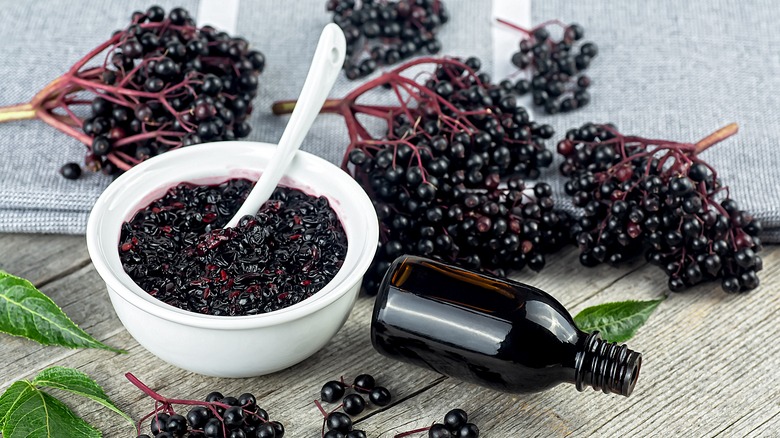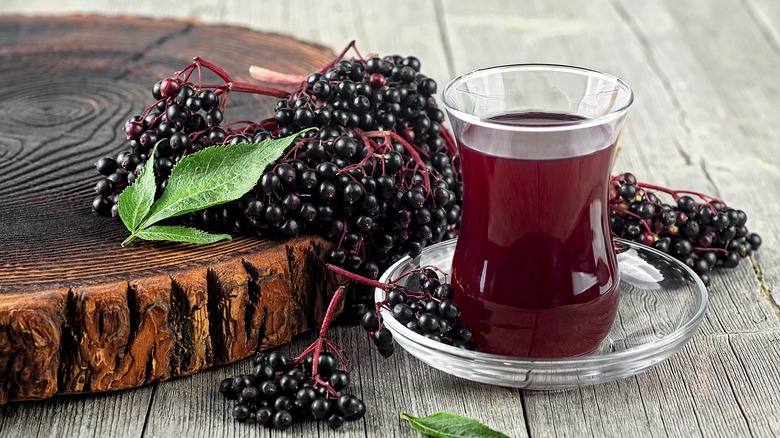How To Safely Cook And Eat Elderberries
Strawberries and blueberries certainly get their time in the limelight for being as refreshing and versatile as they are. Even blackberries and raspberries have secured permanent spots on grocery store shelves. But there are plenty of other types of berries that deserve a place in people's diets just as much. Elderberry, for example, is a highly underrated fruit. Its mildly toxic properties unfortunately overshadow its better qualities. Thankfully, though, if cooked to the right temperature, this food becomes completely safe to eat — and delicious, too.
These fruits need to be fully ripe and heated at high temperatures in order to kill off the cyanogenic glycosides they contain when raw. Otherwise, the cyanogenic glycosides, which can be found in the berries as well as in their leaves, stems, and bark, can cause unpleasant side effects like nausea and vomiting when consumed. But so long as you go through the proper process of cooking these fruits, you can reap all their scrumptious benefits. Not only will they provide your dishes and drinks with a sour yet mildly sweet, floral flavor and purple or blue-black hue, but you'll also be boosting your daily nutrient intake through its generous amounts of vitamin A, vitamin C, fiber, and potassium. Your next spooky-looking black vodka cocktail will surely thank you for the elderberries, too.
Fully ripe, cooked elderberries are safe for consumption
The first step in getting closer to enjoying your elderberries is to make sure you're only working with ripe ones for the previously mentioned reasons. There are a few signs that will indicate your berries are ripe, including a deep purple or black-colored exterior and an overall plump, firm texture. Squishing the berries should yield a similarly dark and pigmented, purple-hued juice. If your elderberry possesses a combination of these qualities, you're good to go. Simply ensure any of the harmful components like the leaves or stems have been removed from your berry before moving on to preparation.
You can now cook the elderberries. There are a few ways to go about this, such as steaming, baking, or even fermenting the pieces. Boiling is the best route to take, though. A good rule of thumb to follow is to allow the berries at least 30 minutes under high temperatures to thoroughly cook and reduce the risk of food poisoning from cyanogenic glycosides. From there, the elderberries are ready to be eaten. Enjoy them on their own, or turn them into an earthy syrup to be poured over some basic buttermilk pancakes or a bowl of bland oatmeal in need of an upgrade.

